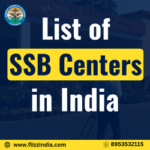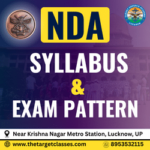In this article we have discussed commands of Indian Army. In Indian Army, various commands are established to facilitate efficient military operations and effective management of forces across different geographical regions. An Indian army command is an organisational unit in the Indian army that is supervised by a military commander who provides a legal framework for the authority bestowed upon them.
You can remember all commands of the Indian Army with their respective headquarters. This will be helpful for students during their NDA Exam and other Defence exams.

Indian Army Commands
| S. No. | Indian Army Command | Headquarter |
| 1. | Western Command | Chandi Mandir, Haryana |
| 2. | Eastern Command | Kolkata, West Bengal |
| 3. | Northern Command | Udhampur, Jammu & Kashmir |
| 4. | Southern Command | Pune, Maharashtra |
| 5. | Central Command | Lucknow, Uttar Pradesh |
| 6. | Army Training Command | Shimla, Himachal Pradesh |
| 7. | South Western Command | Jaipur, Rajasthan |
1. Western Command: The Indian Army Western Command has been active since 1947 and has seen the Indo-Pakistan Wars in 1947, 1965 and 1971. The Indian Army Western Command has 9 Divisions, 3 Corps and 6 Brigades operating under its command. It’s headquarter is in Chandimandir, Haryana. The subordinate units or Corps operating under the Western Command are as follows:
– II Corps in Ambala, Haryana
– XI Corps in Jalandhar, Punjab
– IX Corps in Yol, Himachal Pradesh
2. Eastern Command: One of the Indian Army’s six operational commands is the Eastern Command. Its headquarters are located at Fort William in Kolkata, West Bengal. On November 1st, 1920, the Eastern Command was established. A general command-in-chief with three stars is in the Command (GOC-in-C). It’s headquarter is in Kolkata. It’s sub-ordinate units are:
– 23rd Infantry Division headquartered at Ranchi
– III Corps, headquartered at Dimapur, Nagaland
– IV Corps, headquartered at Tezpur, Assam
– XXXIII Corps, headquartered at Siliguri, West Bengal
3. Northern Command: The Indian Army Northern Command is headquartered in Udhampur, Jammu & Kashmir. The Indian Army Northern Command has been active since 1972 and has seen the 1971 Indo-Pakistan War. The Northern Army Command has 3 subordinate units or 3 Corps under it which are as follows:
– XV Corps headquartered at Srinagar
– XVI Corps headquartered at Nagrota
– XIV Corps headquartered at Leh
The Indian Army Northern Command has 7 Divisions and 1 Brigade (10 Artillery Brigade) operating under its command.
4. Southern Command: The Indian Army’s Southern Command has existed since 1895. It has been used in battle during the integration of many Princely States into contemporary India, the 1961 Indian independence of Goa, and the Indo-Pakistani Wars in 1965 and 1971. It’s headquarter is in Pune and sub-ordinate units are:
– 41st Artillery Division, headquartered at Pune, Maharashtra
– XII Corps, headquartered at Jodhpur, Rajasthan
– XXI Corps, headquartered at Bhopal, Madhya Pradesh
5. Central Command: The Indian Army Central Command has been active since 1963 and has seen World War II and it was re-established after the Indo-Sino War.
No units of the Indian Army Central Command are currently working and it has been assigned to the South Western Army Command.
6. Army Training Command: One of the Indian Army’s seven commands is the Army Training Command or ARTRAC. Its current location is Shimla. It has existed since 1991. It’s headquarter is in Shimla.
7. South Western Command: The Indian Army South Western Command has been active since 2005. The Indian Army South Western Command has 7 Divisions, 2 Corps and 3 Brigades (6th Independent Armoured Brigade, 471st Engineering Brigade & 615th Independent Air Defence Brigade) operating under its command. It’s headquarter is in Jaipur. The 2 Corps or subordinate units of the South Western Army Command are as follows:
– I Corps in Mathura, Uttar Pradesh
– XXI Corps in Bhatinda, Punjab
Attempt NDA GAT Mock Test (Free) – in Mobile App
Read complete information about SSB Interview Procedure.
For previous years question paper: Click Here






